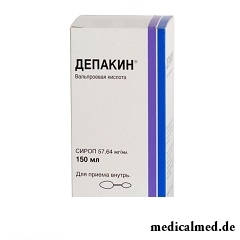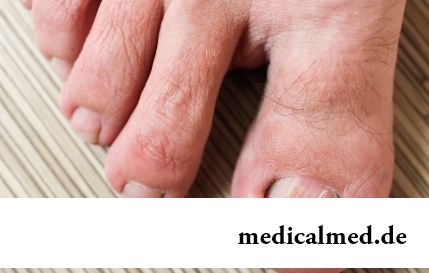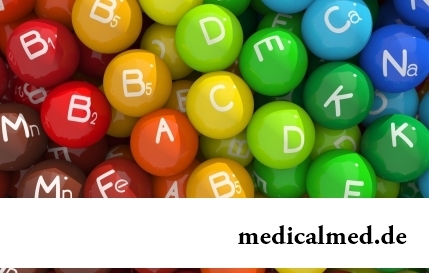





Depakinum
Application instruction:
 Depakinum – drug with antiepileptic action.
Depakinum – drug with antiepileptic action.
Form of release and structure
Depakinum is issued in the following dosage forms:
- Lyophilisate for preparation of solution for intravenous administration: the pressed porous weight from almost white till white color, existence of separate fragments of weight is possible; the enclosed solvent – colourless transparent liquid (on 400 mg in glass bottles, on 1 bottle in pallets (planimetric strip plastic packagings without covering), on 1 pallet in a cardboard pack complete with 1 ampoule with solvent);
- Syrup for intake: siropoobrazny transparent liquid of light yellow color with a cherry smell (in dark glass bottles on 150 ml, on 1 bottle in a cardboard pack complete with a dosing spoon).
Active agent is a part of 1 bottle with lyophilisate for preparation of injection solution: sodium Valproatum – 400 mg.
Solvent: water for injections – 4 ml.
For intake is a part of 1 ml of syrup:
- Active agent: sodium Valproatum – 57,64 mg;
- Auxiliary components: methylparahydroxybenzoate, глицерол, пропилпарагидроксибензоат, 70% the crystallizing sorbitol, 67% sucrose, artificial cherry fragrance, the concentrated Acidum hydrochloricum or strong solution of sodium hydroxide (to pH 7,3-7,7), the purified water.
Indications to use
Depakinum is appointed as monotherapy or along with other antiepileptic drugs at treatment of such diseases / states as:
- Lennox-Gasto's syndrome;
- Generalized epileptic attacks (atonic, tonic, clonic, toniko-clonic, myoclonic, absentias epileptica);
- Partial epileptic attacks (with secondary generalization or without it).
In pediatrics use of drug for prevention of spasms at high temperature is possible (in need of such prevention).
Depakinum in the form of injection solution is appointed in need of temporary substitution of a peroral dosage form of drug.
Contraindications
Syrup for intake
- Hepatitis (acute and chronic);
- Hepatic porphyria;
- Hypersensitivity to drug components.
Injection solution
Absolute:
- Hepatitis (acute and chronic);
- Serious illnesses of a liver (in particular medicinal hepatitis) in the anamnesis at the patient and his close blood relatives;
- Severe damages of a liver with a lethal outcome against the background of use of valproic acid for close blood relatives of the patient;
- Thrombocytopenia, hemorrhagic diathesis;
- Hepatic porphyria;
- Simultaneous use with drugs of the St. John's Wort which is made a hole meflokhiny;
- Hypersensitivity to drug components, and also to seven-sodium Valproatum, valproic acid or a valpromid.
Relative (Depakinum should be applied with care in the presence of the following diseases / states):
- Renal failure (dose adjustment is necessary);
- Joint therapy by several anticonvulsant drugs (because of the increased probability of development of damage of a liver);
- Simultaneous use with the medicines provoking convulsive attacks or reducing a threshold of convulsive readiness, for example, the tricyclic antidepressants, selective serotonin reuptake inhibitors derivative of a fenotiazin derivative of phenyl propyl ketone, chloroquine, bupropiony, tramadoly (because of probability of development of convulsive attacks);
- Simultaneous use with neuroleptics, monoamine oxidase inhibitors, antidepressants, benzodiazepines (because of probability of potentiation of their effects);
- Simultaneous use with phenobarbital, Primidonum, Phenytoinum, lamotridzhiny, a zidovudine, felbamaty, acetylsalicylic acid, indirect anticoagulants, Cimetidinum, erythromycin, karbapenema, rifampicin, nimodipiny (because of probability of change of plasma concentration of these medicines and/or valproic acid);
- Simultaneous use with carbamazepine (because of risk of potentiation of toxic effects of carbamazepine and decrease in plasma concentration of valproic acid);
- Simultaneous use with topiramaty (because of risk of development of encephalopathy);
- Insufficiency of a carnitine of II (KPT) palmitoyltransferase (because of increase in risk of emergence of a rabdomioliz);
- Age up to 3 years (because of the increased risk of development of damages of a liver).
Route of administration and dosage
Syrup for intake
Depakinum usually appoint 10-15 mg/kg in an initial daily dose. Gradually doses increase to optimum (as a rule, from 20 to 30 mg/kg – for adults, 30 mg/kg – for children). At insufficient therapeutic effect perhaps further adequate increase in a dose. To patients, receiving doses 50 mg/kg a day are higher, careful monitoring of a state is necessary.
It is possible to accept syrup 2 times a day.
Injection solution
When performing the simple replacing therapy (for example, before carrying out surgical intervention) in 4-6 hours after reception of the last peroral dose intravenously enter Depakinum, divorced 0,9% sodium chloride solution for injections, one of 2 ways:
- Continuous infusion (in earlier applied daily dose);
- 4 infusions lasting 1 hour (on 1/4 daily doses, applied earlier, on average – 20-30 mg/kg a day).
At the situations demanding bystry achievement and maintenance of effective concentration of valproic acid in a blood plasma, Depakinum is entered intravenously bolyusno in a dose of 15 mg/kg for 5 minutes. After that introduction is continued in the form of continuous intravenous infusion with a speed of 1 mg/kg/h with gradual correction of rate of administering of solution for ensuring concentration of valproic acid in blood by about 75 mg/l. Further, depending on a clinical picture, change of rate of administering of drug is possible.
Transition to reception of Depakinum in the form of syrup (after the infusion termination) can happen using a former dose or a dose which is corrected taking into account a clinical condition of the patient.
Side effects
Syrup for intake
Against the background of use of Depakinum there is a teratogenic risk, and also probability of development of vasculites.
At the beginning of therapy at some patients gastrointestinal disturbances (in the form of nausea, stomach aches) which, as a rule, take place within several days without drug withdrawal often develop.
There are quite frequent messages on the dozozavisimy and/or temporary side effects which are shown in the form of a hair loss, an easy postural tremor, drowsiness. Also often the moderated and isolated giperammoniyemiya without changes in analyses of functions of a liver (drug withdrawal is not required), or the giperammoniyemiya connected with neurologic symptoms can meet.
There are messages on increase in weight of patients, disturbance of a regularity of a menstrual cycle and an amenorrhea.
During therapy development of the following disturbances is possible:
- Neurologic frustration: confusion of consciousness; in several cases when performing complex treatment (in particular with phenobarbital or after sharp increase in a dose of Valproatum) – a lethargy or a stupor, a coma; very seldom – passing dementia;
- System of blood: often – thrombocytopenia; seldom – anemia, a leukopenia or a pancytopenia;
- Skin reactions: exanthematous rashes; in some cases – Stephens-Johnson's syndrome, a toxic necrolysis of epidermis, a multiple erythema.
In rare and very exceptional cases development of such side effects as liver dysfunctions, decrease in level of fibrinogen or increase in a bleeding time (usually without the related clinical signs), a hearing loss (reversible and irreversible), pancreatitis (sometimes leading to a lethal outcome), a reversible syndrome of Fankoni is possible.
Injection solution
During therapy development of disturbances from some systems of an organism is possible (> 10% – very often;> 1% and <10% – is frequent;> 0,1% and <1% – infrequently;> 0,01% and <0,1% – are rare; <0,01% – are very rare; at impossibility to estimate emergence frequency – with an unknown frequency):
- System of a hemopoiesis: often – anemia, thrombocytopenia; infrequently – a leukopenia, a pancytopenia, a neutropenia (the pancytopenia and a leukopenia can proceed with a depression of a marrowy hemopoiesis or without it; after cancellation of Depakinum the picture of blood is returned to norm); seldom – disturbances of a marrowy hemopoiesis (including the isolated hypoplasia/aplasia of erythrocytes), macrocytic anemia, an agranulocytosis, a macrocytosis;
- Coagulant system of blood: often – hemorrhages, bleedings; seldom – decrease in maintenance of blood-coagulation factors (at least one), aberrations of indicators of coagulability of blood (increase in a prothrombin time, the activated partial tromboplastinovy time, the international normalized relation (INR), thrombin time). Emergence of bleeding and spontaneous bruises demands cancellation of therapy and carrying out laboratory and clinical inspection;
- Nervous system: very often – a tremor; often – drowsiness, a nystagmus, extrapyramidal frustration, a stupor, a headache, spasms, memory disturbances, dizziness (can arise several minutes later after an intravenous injection and it is spontaneous disappear within several minutes); infrequently – paresthesia, an ataxy, a coma, a lethargy, encephalopathy, reversible parkinsonism; seldom – cognitive frustration, the reversible dementia which is combined with a reversible atrophy of a brain; with an unknown frequency – sedation;
- Mentality: infrequently – agitation, a condition of confusion of consciousness, aggression, disturbance of attention, a depression (at combined use with other anticonvulsant medicines); seldom – disturbances of ability to training, a psychomotor hyperactivity, behavioural frustration, a depression (at monotherapy);
- Sense bodys: often – irreversible and reversible deafness; with an unknown frequency – a diplopia;
- Alimentary system: very often – nausea (including can arise several minutes later after intravenous administration of Depakinum and spontaneously passes in a few minutes); often – vomiting, changes of gums (preferential, a hyperplasia of gums), pains in epigastriums, stomatitis, diarrhea (most often arise at some patients in an initiation of treatment, but, as a rule, pass in several days and the terminations of therapy do not demand); infrequently – pancreatitis, sometimes with a lethal outcome (as a rule, for the first 6 months of therapy; when developing an acute pain in a stomach it is necessary to control activity of serumal amylase); with an unknown frequency – anorexia, spasms in a stomach, increase in appetite;
- Liver and biliary tract: often – the damages of a liver which are followed by an aberration of indicators of a condition of function of a liver (including decrease in a prothrombin ratio, especially at the same time with considerable decrease in blood-coagulation factors and contents of fibrinogen), increase in concentration of bilirubin and activity of hepatic transaminases in blood; a liver failure (in exceptional cases – with a lethal outcome);
- Respiratory system: infrequently – a pleural exudate;
- Urinary system: infrequently – a renal failure; seldom – tubulointerstitsialny nephrite, enuresis, a reversible syndrome of Fankoni (a complex of clinical and biochemical manifestations of defeat of renal tubules with disturbance of a canalicular reabsorption of glucose, phosphate, bicarbonate and amino acids);
- Immune system: often – hypersensitivity reactions (for example, a small tortoiseshell); infrequently – a Quincke's disease; seldom – a syndrome of medicinal rash with system symptoms (DRESS syndrome) and an eosinophilia, a system lupus erythematosus;
- Skin and hypodermic fabrics: often – a dozozavisimy or passing alopecia (including an androgenic alopecia against the background of the ovaries which developed a polycystosis, giperandrogeniya, and also an alopecia at the developed hypothyroidism); infrequently – disturbances from hair (including growth disorder of hair and their normal structure, discoloration of hair), a hirsutism, rash, an acne; seldom – Stephens-Johnson's syndrome, a toxic epidermal necrolysis, a mnogoformny erythema;
- Musculoskeletal system and connecting fabric: infrequently – osteosinging, decrease in mineral density of a bone tissue, fractures and osteoporosis at the patients who are for a long time accepting valproic acid;
- Endocrine system: infrequently – a syndrome of inadequate secretion of antidiuretic hormone, a giperandrogeniye (virilescence, a hirsutism, an acne, increase in concentration of androgens in blood and/or an alopecia on men's type); seldom – a hypothyroidism;
- Metabolism: often – increase in body weight, a hyponatremia; seldom – insufficiency a biotinidase/lack of biotin, a giperammoniyemiya (at its development it is necessary to interrupt reception of valproic acid and to conduct additional examination);
- Vessels: infrequently – a vasculitis;
- Reproductive system: often – a dysmenorrhea; infrequently – an amenorrhea; seldom – a polycystosis of ovaries, male infertility; with an unknown frequency – increase in mammary glands, a galactorrhoea;
- Benign, uncertain and malignant tumors (including polyps and cysts): seldom – a miyelodisplastichesky syndrome;
- General frustration: infrequently – not heavy peripheral hypostases, a hypothermia.
Special instructions
Prior to therapy, and also periodically for the first 6 months of use of Depakinum it is necessary to conduct a research of function of a liver, in particular at patients from risk group.
At small increase in amount of enzymes of a liver, especially at the beginning of therapy, carrying out full laboratory inspection is recommended.
Children up to 3 years are recommended to apply Depakinum as monotherapy, but prior to treatment it is necessary to weigh potential advantage with probability of developing of pancreatitis or diseases of a liver.
Before therapy or carrying out surgeries, in case of spontaneous bleedings or hematomas it is recommended to carry out blood test (to define a blood count, including a bleeding time, quantity of thrombocytes and coagulative tests).
At a renal failure decrease in a dosage can be required.
Before purpose of Depakinum patients with a system lupus erythematosus should compare advantage of therapy with potential risk.
At suspicion on deficit of enzymes of a carbamide cycle prior to therapy it is necessary to conduct metabolic researches as valproic acid reception in this case is connected with danger of development of a giperammoniyemiya.
During treatment by valproic acid alcohol intake is not recommended.
When driving it is necessary to consider probability of emergence of drowsiness, in particular when carrying out the combined anticonvulsant therapy or the combined use with benzodiazepines.
Medicinal interaction
At simultaneous use of Depakinum with some medicines there can be following effects:
- Other psychotropic drugs (neuroleptics, monoamine oxidase inhibitors, antidepressants, benzodiazepines): potentiation of their action (therapy is recommended to be carried out under careful medical observation, if necessary it is necessary to adjust doses);
- Phenobarbital: increase in its concentration in plasma and increase in probability of development of sedative action, in particular at children (for the first 15 days of a combination therapy careful medical observation with immediate decrease in a dose of phenobarbital at development of sedative action is recommended);
- Primidonum: increase in its concentration in plasma, strengthening of its side effects, in particular sedative action (careful medical observation, especially at the beginning of a combination therapy is recommended);
- Phenytoinum: decrease in its general concentration in plasma (careful medical observation is recommended);
- Carbamazepine: manifestation of its toxicity (careful medical observation is recommended);
- Lamotridzhin: delay of his metabolism in a liver, increase in the period of its semi-removal and increase in toxicity in the form of heavy skin reactions, including a toxic epidermal necrolysis (careful medical observation and, if necessary, dose adjustment is recommended);
- Zidovudine: increase in its plasma concentration and toxicity;
- Felbamat: decrease in average values of its clearance;
- Nimodipin (at intake and parenteral administration): strengthening of hypotensive effect;
- The antiepileptic medicines capable to induce microsomal enzymes of a liver (including phenobarbital, Phenytoinum, carbamazepine): decrease in plasma concentration of valproic acid (the dose of Depakinum needs to be adjusted depending on concentration of valproic acid in blood and clinical reaction);
- Meflokhin: valproic acid metabolism acceleration, increase in probability of development of an epileptic seizure;
- Drugs of the St. John's Wort which is made a hole: decrease in anticonvulsant efficiency of Depakinum;
- The drugs having strong and high communication with proteins of a blood plasma (acetylsalicylic acid): increase in concentration of free fraction of valproic acid;
- Indirect anticoagulants: careful control of a prothrombin ratio is necessary;
- Cimetidinum or erythromycin: increase in concentration of valproic acid in a blood plasma;
- Rifampicin, karbapenema: decrease in concentration of valproic acid;
- Topiramat: increase in probability of development of encephalopathy and/or giperammoniyemiya;
- Kvetiapin: increase in probability of development of a leukopenia/neutropenia;
- Ethanol and other potentially gepatotoksichny drugs: strengthening of hepatotoxic effect of valproic acid;
- Clonazepam: strengthening of expressiveness of the absansny status;
- Medicines with myelotoxic action: increase in risk of oppression of a marrowy hemopoiesis.
Terms and storage conditions
To store in protected from light, the place, unavailable to children, at a temperature up to 25 °C.
Period of validity:
- Lyophilisate for preparation of injection solution – 3 years, solvent – 5 years;
- Syrup for intake – 3 years.
Name of drug
Price
Drugstore
Depakinum ml syrup 57.64mgml 150 *, Sanofi-Winthrop
304 rub.
 Network of the Moscow drugstores of IFC
Network of the Moscow drugstores of IFCHronosfer's Depakinum гран. pro-longum. for intake of 100 Mg 30 pieces
632 rub.
 Apteka вер.ру, LLC
Apteka вер.ру, LLCDepakinum hrono тбл п / about pro-longum of 500 mg No. 30, Sanofi-Winthrop
646 rub.
 Network of the Moscow drugstores of IFC
Network of the Moscow drugstores of IFCDepakinum of a hronosfer гран.пролонг 100 mg pack ice No. 30, Sanofi-Winthrop
671 rub.
 Network of the Moscow drugstores of IFC
Network of the Moscow drugstores of IFCIf your liver ceased to work, death would come within a day.

High temperature - a frequent symptom of such widespread diseases as a SARS, quinsy, pneumonia, etc. To reduce heat, облег...
Section: Articles about health
Each failure in work of bodies and systems of a human body is, as a rule, shown by the whole complex of symptoms. In particular, malfunctions with health often cause emergence of cosmetic defects in the form of rashes on a face. Experienced doctors know that локализац...
Section: Articles about health
The word "onikhokriptoz" is unfamiliar to most of people, meanwhile quite so physicians call very widespread problem: the growing of edge of a nail into surrounding fabrics causing inflammatory process. Usually the illness affects thumbs of legs, and is followed by reddening, hypostasis, and in the started cases – release of pus. Patients complain of the pain amplifying when walking, problems with the choice of footwear....
Section: Articles about health
Statistically, in Russia about 34% of citizens smoke. Most of consumers of tobacco has problems about health sooner or later...
Section: Articles about health
The metabolism at each person proceeds in own way. However between the speed of this process and disposal of excess weight after all all have a dependence. Unfortunately, the people inclined to try on itself numerous "miracle" diets, not always at...
Section: Articles about health
Vitamin complexes belong to the most popular drugs, probably, in our country there is no person who was not hearing about advantage of vitamins and never their accepting. The more vitamins, the better, we consider and as it appeared, cruelly we are mistaken. Whether vitamins, whether so harmlessly general hobby for polyvitaminic complexes and whether it is possible to do without them are so useful? Let's try to understand....
Section: Articles about health
About 20% of the population of our planet have a hypertension (permanent increase in arterial pressure). This disease negatively narrations...
Section: Articles about health
Cold is such painful that each sigh becomes a victory, heat "knocks" down, and the ache in joints forces to think only of pain. Some people with approach of the first symptoms of cold make the self-sacrificing decision to have a disease standing, and to a beam...
Section: Articles about health
Modern footwear is extremely various. It stopped being only protection for legs long ago. Today shoes, boots, barefoot persons choose not so much proceeding from their convenience and functionality how many being guided by outward, brand and an opportunity to add with them a stylish dress. At the same time, buying footwear, think of its safety a little. Meanwhile, many popular models can do essential harm to health....
Section: Articles about health
The phenomenon of the panic attack is known long ago, but the reasons of its emergence still are up to the end not found out. It is established that more than 30%...
Section: Articles about health
Stability of a hormonal background is one of the most important conditions of preservation of health of the woman. At the same time endocrine system – the thin device extremely sensitive to any external influences. Changes of an image жиз can become the reason of hormonal failure...
Section: Articles about health
Health and attractiveness - eternal values, pursuing which people often use the most unusual ingredients and technicians. Let's consider 11 most exotic and sometimes not most pleasant Spa procedures to which the person in a pursuit of beauty and youth agrees....
Section: Articles about health
Separate food - the system of meal based on digestion physiology which is carried to improvement methods. In opinion д...
Section: Articles about health
(Xerostomia) many people consider feeling of a xerostomia small and easily removable inconvenience. This delusion: the symptom can demonstrate existence of serious diseases. It is worth to remember also that saliva performs important functions...
Section: Articles about health
The winter swimming in open reservoirs called in our country by "winter swimming" – officially recognized sport and one of the most extreme ways of a hardening of an organism. This occupation has an old story and adherents in many countries. The international competitions in winter heats on open water, and every two years – the World Cup are annually held. Despite huge popularity and the proved advantage for health, winter swimming is still surrounded with hardy delusions. Ра...
Section: Articles about health
For the time being the perspective of heart diseases seems to most of people remote and foggy. But sooner or later практичес...
Section: Articles about health
The sclera and mucous membrane of an eye are intensively supplied with blood vessels which problem - to saturate nervous tissues of body with nutrients and oxygen. In a normality vessels are almost not noticeable, however at their expansion (owing to истонч...
Section: Articles about health
What they, women? Beautiful, gentle, passionate and at the same time windy, gusty, and nervous. And what is stranger: have all these qualities of the woman at the same time. But here only the mood their time sharply changes on completely opposite: in the morning they laugh and joke, and in the evening cry or are irritated....
Section: Articles about health
All the known slogan "Protect Men!" arose not from scratch. In a sense, the nature created representatives of strong...
Section: Articles about health
Each person knows that fervescence is an illness sign. However too low temperature (hypothermia), especially also can demonstrate existence of diseases when it is observed long enough. Such state is dangerous those...
Section: Articles about health
Women quite often suffer from complexes concerning the sizes of the bust. Strangely enough, not too modest, and excessively curvy shapes become the reason of sincere discomfort sometimes. Except psychological problems, the big bust sometimes creates also quite notable malfunctions with health: his owner can feel muscular dorsodynias, feeling of constant fatigue and difficulty of breath. Over time excess loading leads to development of diseases позвоночн...
Section: Articles about health
Statistically, can only one of ten of our compatriots brag of a decent condition of an oral cavity. On среднестатистич...
Section: Articles about health
The fatigue, sleep debt, disturbances of food, bad mood, vagaries of the weather – all these circumstances badly affect our appearance. Especially the person suffers: skin becomes flabby, loses healthy color, becomes covered by wrinkles, zones of hypostases and t appear...
Section: Articles about health
History of mankind contains several tens of epidemics whose emergence was compared by eyewitnesses and historians to doomsday. The most terrible of them claimed the lives of millions of people, having made even the whole people to the person of the earth. What they − the diseases striking terror? Whether it managed to the person to find treatment, or he is still powerless before forces of nature?...
Section: Articles about health
We live during an advertizing era. Daily each person receives a solid portion of persuasive councils about what to eat to be здо...
Section: Articles about health
Long time antibiotics were considered as a panacea from all diseases and were appointed even at insignificant symptoms of an infection. Even now not everyone knows in what force of antibiotics how and when they should be accepted. Let's discredit 7 popular myths about such drugs...
Section: Articles about health
Some people consider what for medicine of the 21st century of secrets in the field of health of the person almost does not exist. It absolutely not so. The more answers scientists receive, the more the most difficult questions are raised for them by life. Besides, there are diseases which are not explained with science in any way of which existence people know for 100-150 years. These diseases meet not so often, but from some of them nobody is insured....
Section: Articles about health
